Hypermobility: Are you flexible or hypermobile?
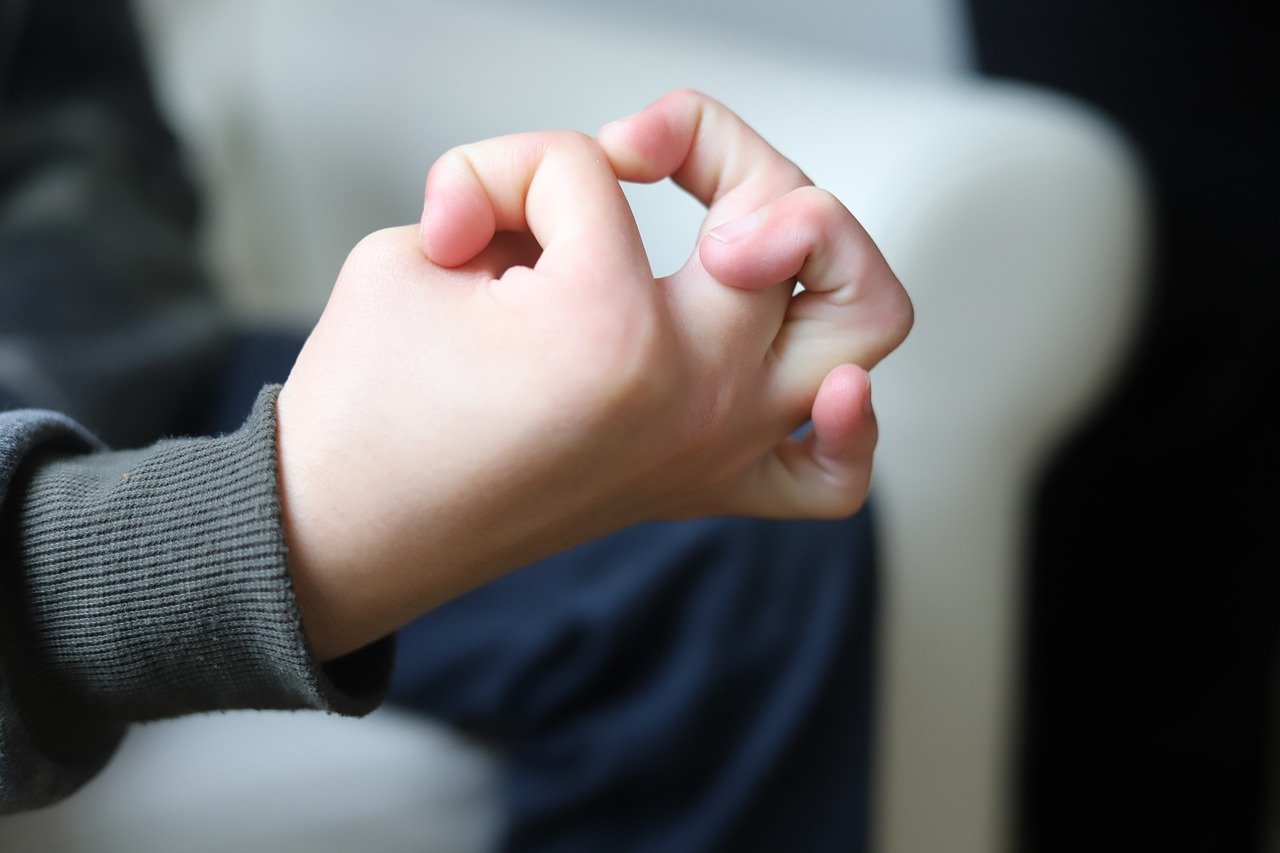
Do you remember your school days? Naïve and boastful kids, all trying to one-up the other. There was always that one child who could do weird tricks with his or her body and garner a collective “wow” from the crowd. Some of these “contortionist tricks” would include bending the thumb or little finger backwards way beyond 90 degrees to touch the forearm. We might have been in awe of their flexibility but did you know that these were part of having Joint Hypermobility?
Hypermobility, also known as double-jointedness, describes joints that stretch beyond the normal range of mobility. It differs from flexibility. Whilst flexibility refers to the ability to lengthen muscles, hypermobility refers to laxity in a person’s ligaments, which are the connective tissue between the bones. It shows up, predominantly, in the elbow joints and knee joints, which bend beyond 180 degrees and become concave. By itself, hypermobility isn’t a medical condition and many people don’t even realise that they have it until it causes any problem. In fact, it becomes advantageous in certain sports like swimming or dance. However, it makes them prone to sprains, soft tissue injuries or even dislocation.
Any heritable condition cannot be cured, we can only manage the signs and symptoms. Since the hyperextension of joints occurs due to laxity of ligaments, which are supposed to be the stabilisers of the joint, proprioception doesn’t kick in for hypermobile individuals until the extreme ranges. Thus, the adjacent deep muscles have to be recruited to provide feedback to the brain and need to be strengthened. This is where Pilates steps in.
Workouts for hypermobile individuals need to include close-chain load-bearing exercises, which provide feedback from the ground or equipment. Pilates, especially on the Reformer and Chair, makes use of the spring tensions which provide a controlled range of motion. The springs give a level of control while working muscles both, concentrically and eccentrically. And, in Pilates as they work from the core, which is the powerhouse of the body, muscle function of big and small muscle groups improves drastically.
Pilates movements help the client establish body awareness and improve proprioceptive awareness. Forging new neural pathways and neuromuscular connections helps make a new brain map of the muscles. In practice, this means being aware of the difference between ‘hanging’ the joint at the end range and ‘gathering’ the muscles to engage the joint and hold it in place. Again, with feedback and precision, the client can learn internal resistance and stability improving their ability to control their movement.
At Moushu’s Pilates, we focus on hands-on cueing and use small props like the theraband and the magic circle which aid the client’s awareness, helping them bring their mind to their body. We also cue them to concentrate on breathing as it helps in recruiting appropriate muscles to function. It can take enormous energy to hold the body together when integral parts are loose and sensation hard to find, and, in a Pilates setting the mind may well be on overdrive to compute instructions to translate into action. Thus, we use breathing and continuous feedback to connect the client into their body and ‘out of their hypervigilant nervous system’. This helps foster a calmer nervous system response. We also work on building endurance as people with hypermobility get fatigued easily.
Some of the exercises which really help hypermobile individuals retrain their joint mobility are:
Oblique prep with the mini ball between the legs:
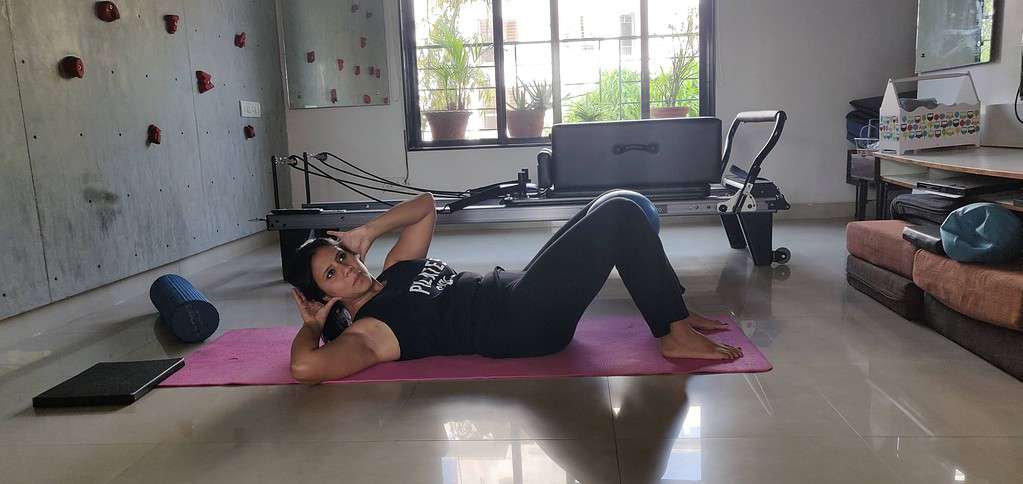
Lie down on your back and fold your knees, with feet flat on the floor. Squeeze the mini ball between your thighs and place your hands below your head to support the neck. Lift up from the upper ab diagonally, alternatively. This will helps to activate the anterior sling and strengthen the obliques.
Clam shells:
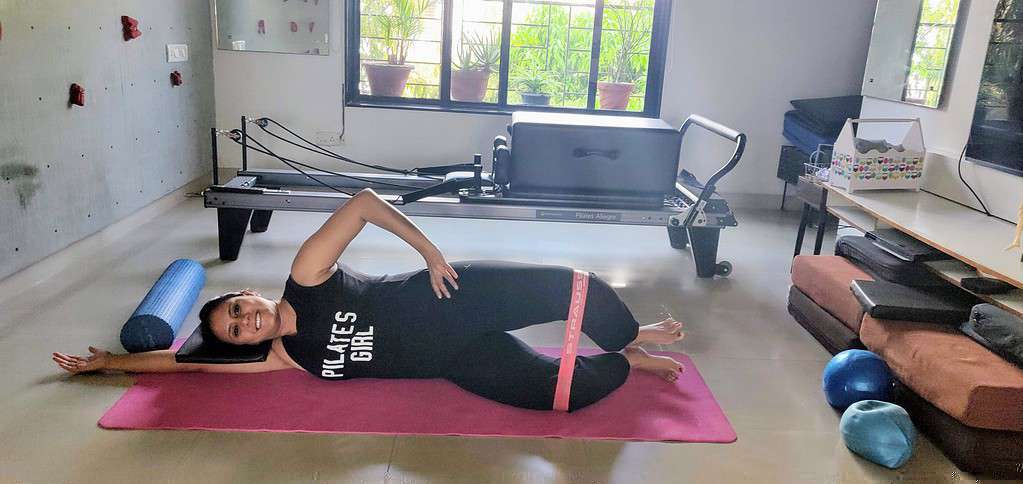
Lie down on your side with a band around your legs. Engage from your core and open and shut the legs like a clam. This exercise will strengthen your hips and thighs while also stabilizing your pelvic muscles and toning your glutes.
Serratus push-ups:
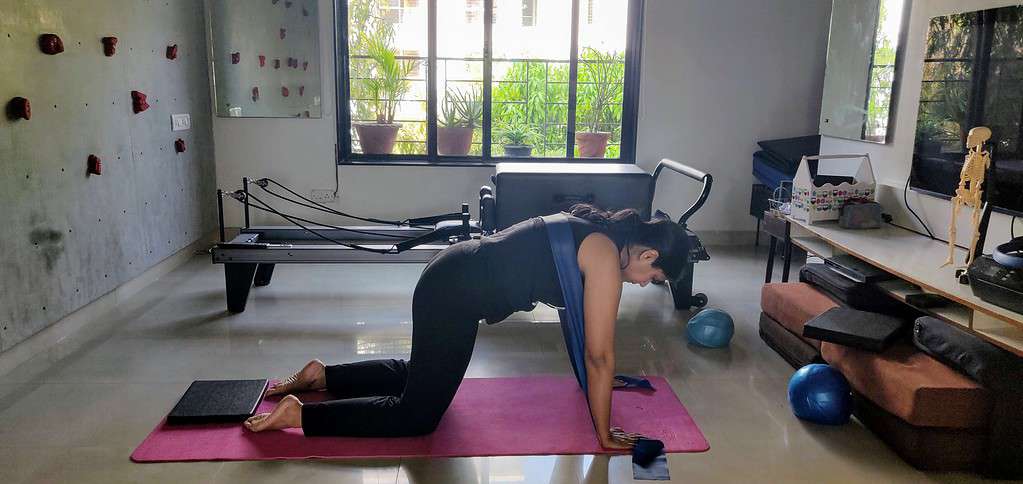
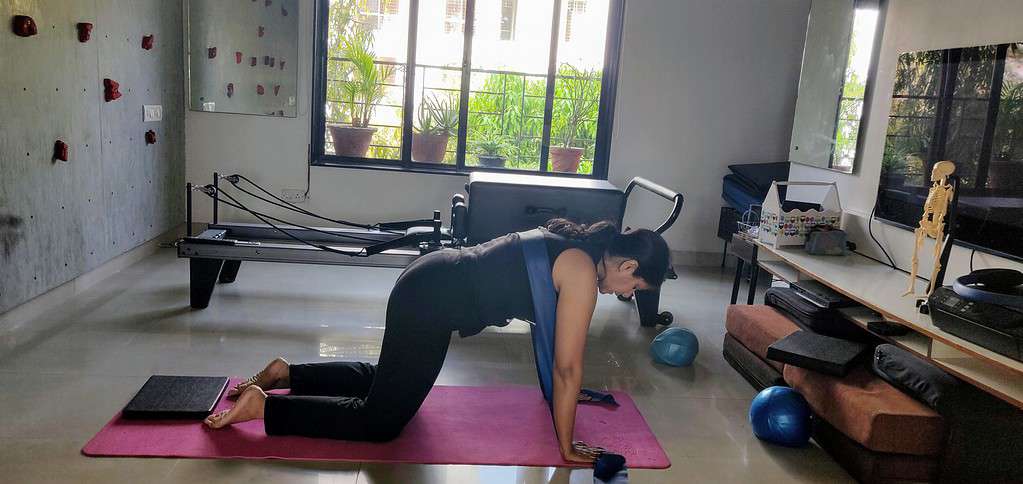
Prop yourself on all-fours, with the theraband taut around your upper back. Push your shoulder blades towards one another and then away. This helps strengthen muscles which keep the upper back and shoulders moving smoothly. The theraband helps in giving some proprioceptive feedback.
Bridge:
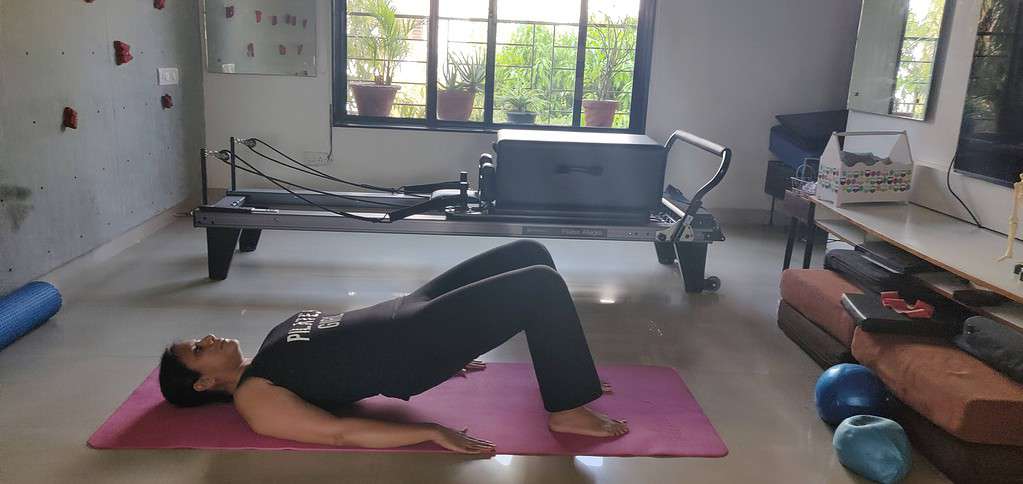
Lie down on your back with your knees bent and feet flat on the floor. In this exercise, when you connect with the feet to slowly peel the spine one vertebrae at a time, it strengthens the glutes and mobilizes the spine.
Footwork on the reformer:
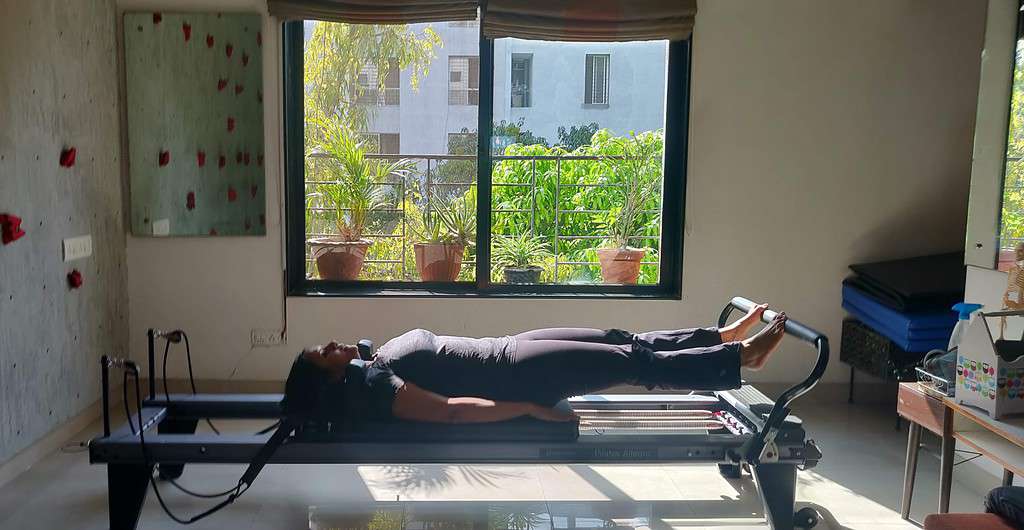

Lie on your back with your feet against the footrest. Extend the knees to press out, working in the inner and outer range first to gain control and strength through proprioceptive feedback of the back and the resistance of the springs.
If you have signs of hypermobility or have been diagnosed with a Hypermobility syndrome, you can do these exercises. Or you can drop in at our studio for a check-up and to get a personalized regime for your condition.
